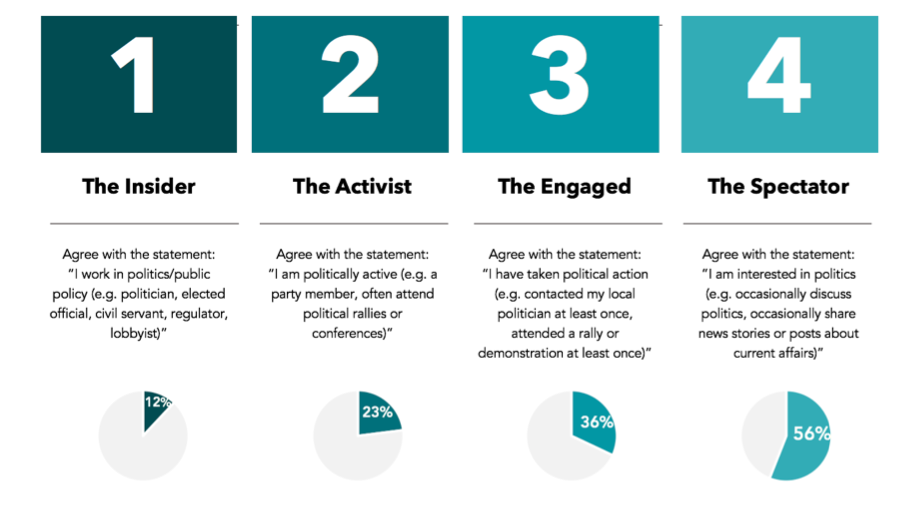
As a PhD student at the Department of War Studies, King’s College London, I couldn’t help but notice the similarities between social media communication strategies employed by think tanks and similar organisations, and the technology employed in modern day weapon systems.
In my field of study, every day I am flooded with information on “precision-guided munitions” (PGMs) employed against military targets abroad. For those who don’t know, the PGM is exactly what it says on the tin: a guided munition that allows the user(s) to precisely hit a specific target, increasing the lethality against the intended targets.
The unguided bombs, dubbed the “dumb bomb”, are largely portrayed by the news media due to the devastating effects of collateral damage. The dumb bomb is simply a bomb minus the guidance system.
This is something Aidan and I have discussed numerous times. Here are our conclusions.
The parallels are in the targeting. Despite the proliferation of social media platforms used by think tanks – e.g. Twitter, LinkedIn, Facebook, YouTube, and even Instagram and Pinterest – the smart use of social media is not common within the sector.
Don’t get us wrong, a small number of think tanks have assembled a coherent arsenal of social media channels for their intended audiences. And a few have tested and fine-tuned the content formats they deploy: whether it’s infographics, videos, audio clips or interactive graphs.
But too many think tanks are persevering with sharing 50-page+ PDF reports, hoping that the senior fellow without a Twitter account has a good academic following and research appreciation. And that maybe a few journalists have picked up the report.
To bring it back to our analogy: Some think tanks have upgraded to precision-guided munitions – investing time into audience or comms research, leveraging the insight to create tailored content formats, and using social platforms’ hyper-specific targeting capabilities. Others stick with the “dumb bomb” approach.
In our recently-release reports on US and UK think tank communications and trust – Forging the Think Tank Narrative – we highlighted the Policy Communications Gap.
In case you haven’t read it, we defined four levels of political engagement: The Insider, The Activist, The Engaged, and The Spectator. The figures below are taken from the US report, but the UK figures are broadly aligned.

The graph below shows the extent to which social media platforms are used by each of these segments. Essentially – if you are pinning all your hopes on Twitter, and if you are not using paid social to support your posts, your efforts may well be in vain.

To be clear, we are not saying that Twitter should not be part of your arsenal – the platform is second to none at drawing media and political influencers. However, any broader impact is likely to be limited.
There is a place for a variety of channels – reflecting the way we use a variety of platforms. For example, the Cast From Clay team routinely comes across think tank articles through Facebook and share them internally via WhatsApp, before sharing externally through Twitter and (sometimes) LinkedIn.
But it is not just about the variety of channels: it is about the right content in the right format on the right channel for the right audience.
Sign up to our newsletter
Why does this matter? For anyone still believing that a report, an event, a press release and a series of tweets are an acceptable template, the graph below ought to be a wake-up call. While 2 out of 3 ‘insiders’ believe government policy is communicated well, fewer than 1 in 5 members of the public agree. We call this the Policy Communications Gap.

If your think tank is not approaching content like a publisher, the chances of your messages hitting the mark are severely reduced.
It’s time to drop the 50 page+ pdf report and a media-only strategy approach. Yes, the PDF still has a place. As an academic-in-training myself I have wasted much of We are Flint’s printing ink to print off journal articles. These are extremely important to me. But I fall into the broad category of the ‘Insider’.
These content formats are not fit for audiences beyond this category. We know – we have the data.
It is time to upgrade to a precision-guided social media strategy. Dumb bombs won’t hit the intended targets – they risk wasting money, and falling short of your think tank’s research impact potential. What is the point in investing time and money in your research, if it has no real-world impact when published?
Think tanks play an essential role in generating policy ideas, but without a smart communications strategy around those ideas the likelihood is that they have no impact. For any commander, this would be a sad state of affairs.
Tim Moots is communications researcher and Aidan Muller is digital strategy lead at Cast From Clay.





